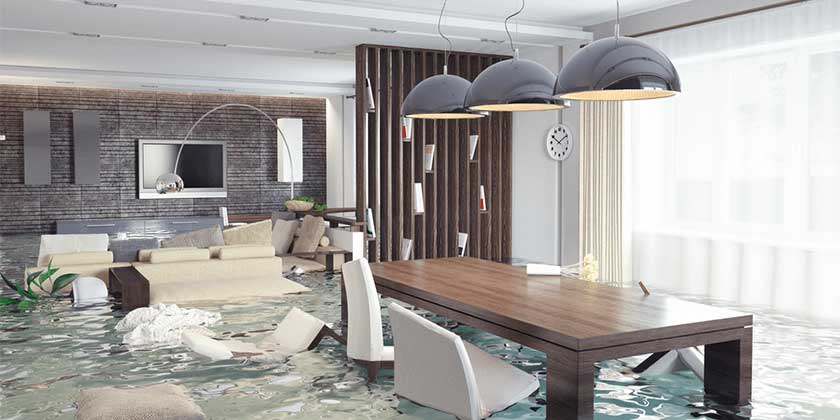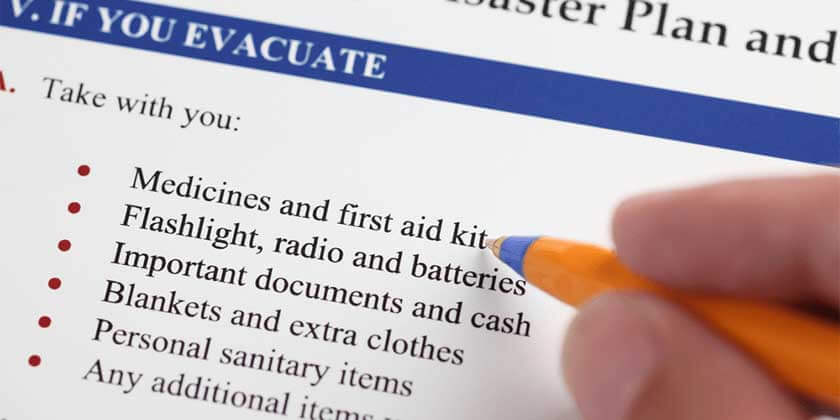How to protect your home from flooding

Floods can come quickly and unexpectedly, causing significant damage to property and disruption to households.
“Floods account for 30% of Australia’s natural disasters. The most common form of flooding in Australia is the flooding of rivers following heavy rainfall”
There are many things you can do to limit both damage to your property and the risks to your family. If you live in an area prone to flooding, the first thing to do is to get educated about the risks and establish an emergency plan to safeguard your family and home. Another thing you can do is take out a home insurance policy that covers you for flood damage.
Check for flood risk in your area
Flooding in Australia often results from overflowing rivers after heavy rain or the overflowing of drains in suburban areas. If you’re unsure whether you’re living, travelling through or working in a flood-prone area, check the local council and get advice on whether your place of work or residence is in a risk area for floods. Ask the council about river and creek catchments or changing drainage arrangements that could affect flood risk levels in the area.
As you review the flood risk in your area, list any useful sources of information that you come across, such as websites, radio stations, phone lines, and SMS update services. These will be useful when you need to check in and stay updated when a flood strikes. By staying informed, you’re better able to make quick decisions for your family’s safety and on evacuating or staying.
Create a flood file
Once you’re clear about your flood-risk levels, you can start preparing for potential floods. Start by putting together a personal flood file that has all your insurance documents, insurer contact information, and household or property inventory that serves as a complete record of your valuables, along with receipts. Keep this file in a waterproof container. If you do ever have to file an insurance claim, having a go-to flood file will save you a consideration amount of time.
Reinforce windows and doors
Check that all windows and doors can be closed and locked, and that there are no gaps that will let water into the house in the event of heavy rain. In humid climates, doors and windows can shrink or expand, making full closure difficult. Adjust these where necessary, or use gap fillers to make sure water can’t get in.
Check your home

In addition to reinforcing doors and windows, do a thorough check of your property. Start with your sump pump and ensure it’s in good working order. Consider purchasing a battery-operated backup pump so you’ll have a working pump even if you do lose power. Water alarms are also a great option as they alert you when your basement or lower levels are flooding.
Check your gutters and downspouts, and clean these out if necessary. Where possible, make sure all electrical components – including circuit breakers, wiring, sockets, and switches – are elevated well above the likely flood level. If you’re expecting the flood to strike soon and you have time to act, relocate your furniture and any valuables that you won’t be able to take with you. Move and secure these to higher levels on the property.
Sandbagging your property
While sandbags won’t fully insulate your home from the impact of flooding, they could greatly minimise the damage that flood causes and help save you money on repair work. You can usually find sandbags in hardware stores or buy them from landscaping suppliers. These should be filled to around two-thirds full and only sand should be used, not soil.
Sandbags may not be necessary for the building perimeter. For homes built on concrete slabs, you might need to only lay sandbags over any floor wastes or drains that could serve as entry points for grey water backflow. Sandbags should also be set in front of brickwork vents, air vents, doorways, and roller doors. Before you set down the sandbag, use a piece of plastic sheeting to add an extra layer of waterproofing. Set the sandbags like bricks and stagger the sandbags with an overlap so that the ends don’t meet.
If sandbags come into contact with floodwater, make sure you discard them after the flood. Handle wet sandbags with gloved hands to avoid coming into contact with chemicals and other contaminants in the flood water.
Setting up an emergency plan

If the area in which you live or work is at risk of flooding, it’s a good idea to have a clear emergency plan in place so you know exactly what to do when the flood comes. As you formulate your plan, consider what you need to do to take care of all household members, including pets and anyone with special needs.
Consider what can happen during a flood: for example, what you should do if roads are closed off and you have to go without power and water for a certain period of time. You should also consider how family members will contact each other during the emergency and identify a safe local area to meet when the flood does arrive and you have to evacuate quickly.
Prepare a general checklist so you can quickly take action as soon as you hear about the flood. Your checklist should include things like filling up the car with petrol before the flood strikes, getting together your toolkit items, locking doors and windows and setting sandbags in place.
Educating family members
Your family members may be unaware of the dangers of flooding, so warn them about possible dangers. These include not using flooded roads, downed power lines, contaminated water, moving debris carried by flood water, and electrical damage during storms. Make sure all members of your household are familiar with the evacuation strategy so you can quickly mobilise them during an emergency.
Evacuation strategy
You should also consider your evacuation strategy, which outlines where you go and how you get there. Get to know your local community’s recommended evacuation routes. Contact friends or relatives whom you’ll be staying with when you evacuate. Let them know about your emergency plan, so they’re ready to provide help when you need it.
Emergency toolkit
You’ll also want to prepare an emergency toolkit as you outline your plan. Your toolkit should include basics such a portable radio, torches with spare batteries, a First Aid kit and multiple copies of your emergency plan for each family member. Don’t forget to pack plenty of bottled water, blankets, non-perishable food, rubber gloves, any important documents, medications and mobile phones.
Switching off during emergencies
Your emergency plan should also include a checklist for switching off if flooding does occur. Check the locations of your electrical switchboard, gas connection, water supply, solar inverter, and any other relevant sources. Keep these refreshed in your mind or draw a map of their location so you can quickly turn these off when the flood strikes.
Other resources
- Using sandbags to protect your home and business – Queensland Government Disaster Management
- How to Prepare for a Flood – Federal Emergency Management Agency (FEMA)
- Emergency plans and kits – Victoria State Emergency Service
22 Jun 2016